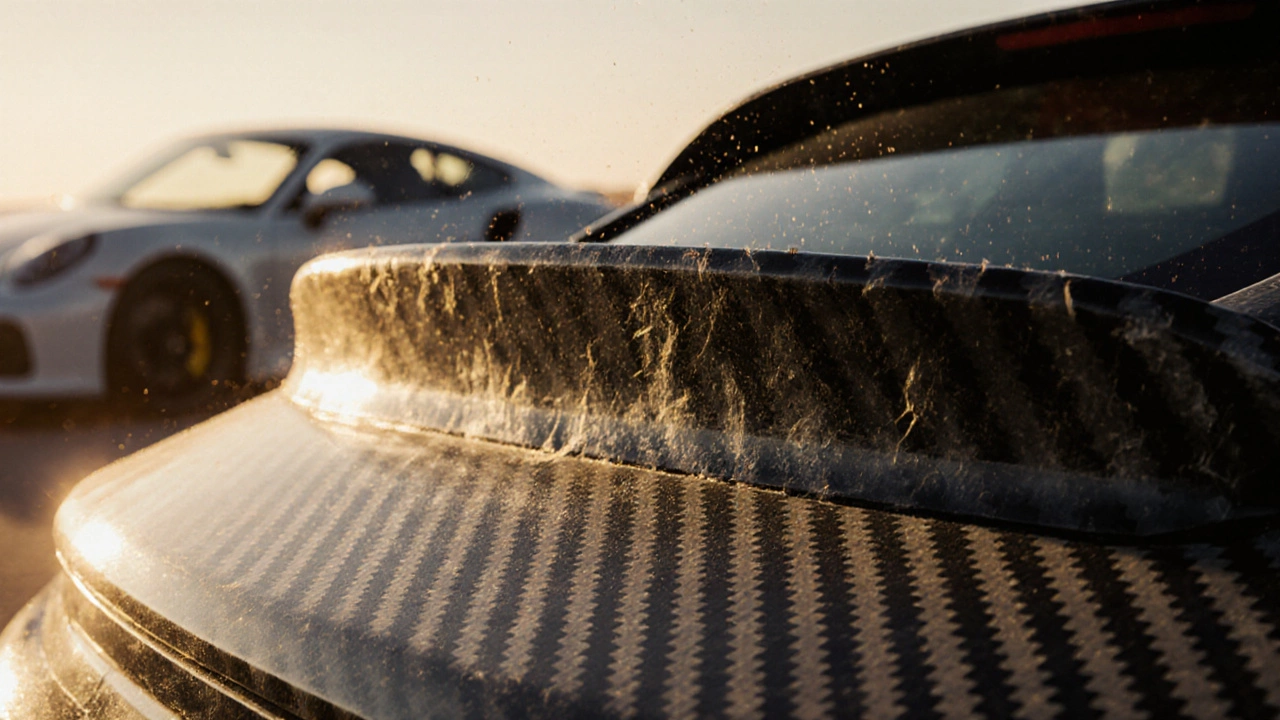When your car’s carbon fiber, a lightweight, high-strength material used in performance car parts like spoilers, hoods, and side skirts. Also known as CFRP (carbon fiber reinforced polymer), it looks expensive and feels premium—but it’s not indestructible. A rock chip, a parking lot scrape, or even a minor collision can leave visible damage that ruins the look and weakens the structure. Most people assume carbon fiber is unfixable, or that repairs cost thousands. That’s not true. With the right approach, you can restore cracked or scratched carbon fiber parts yourself—no shop needed.
Carbon fiber repair, the process of restoring damaged carbon fiber components using resin, filler, and finishing techniques isn’t magic. It’s layered: clean, fill, reinforce, and finish. You don’t need a vacuum bag or an oven. A heat gun, sandpaper, epoxy resin, and a little patience will get you 90% of the way. Many of the same techniques used in boat and bike repair work perfectly on car parts. The key is matching the weave pattern and avoiding air bubbles. A bad repair looks obvious. A good one blends in so well, even other enthusiasts won’t spot it.
Related to this are carbon fiber patch, a pre-cut reinforcement layer of carbon fiber fabric used to restore structural integrity, and carbon fiber restoration, the full process of returning a damaged part to its original appearance. These aren’t just cosmetic fixes. A cracked spoiler isn’t just ugly—it can flex dangerously at speed. A properly repaired piece regains its strength and keeps your car safe. And unlike replacing the whole part (which can cost $500+), a DIY repair runs under $50.
You’ll find in the posts below real-world examples: how to fix a cracked rear wing, how to hide scratches on a hood, how to match the gloss finish after sanding, and what products actually work (and which ones don’t). No fluff. No marketing jargon. Just steps you can follow, tools you already own, and mistakes to avoid. Some people try using regular body filler on carbon fiber—it fails. Others skip the final clear coat and end up with a dull, yellowed patch. We’ve seen it all. The posts here show what works after testing it on actual cars.
Whether you’re dealing with a small crack from a car wash or a major impact from a curb, carbon fiber repair is a skill that saves money and keeps your car looking sharp. It’s not about being a professional. It’s about knowing what to do next. And that’s exactly what these guides give you.

Carbon fiber spoilers look great but are vulnerable to UV rays, physical impacts, chemicals, and heat. Learn what really damages them and how to protect your investment with simple, proven steps.